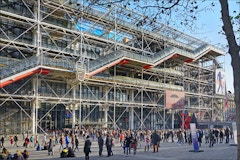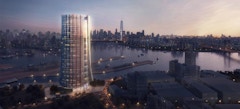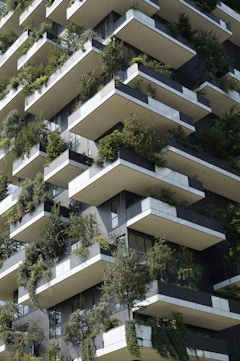
42 results
-

-

A Break From The Past: How the Guggenheim Renovation Made Thermally Broken Steel Windows a New Normal
- Article by Angel Ayón, AIA, NCARB, NOMA, LEED AP, Principal
-
New Challenges – New Facades!
- Article by Ulrich Knaack
Being part of the European Façade Network efn, an association of ten research and education entities throughout Europe, I would like to share my experiences of last year’s conferences and research activities with this brief contribution.
-

Tectonism and Responsible Urban Futures
We at Zaha Hadid Architects Computation and Design group (ZHACODE) explore the relevance of this resource-effective, experience-rich design and construction paradigm to both large institutional projects with complex geometry and mass-customisation, repeated unit projects with assembly complexities.
-
Facade Tectonics Institute Recognizes Industry Leaders with the Vitruvian Honors & Awards
- Article by Mic Patterson, PhD LEED AP+, Ambassador of Innovation & Collaboration
In this first 2022 issue of SKINS, we pause to look back on 2021 through our most-read stories of the year, which we’ve recycled here in case you missed them. The very first thing we see is the inaugural Vitruvian Honors & Awards (VH&A) program conducted virtually. It was a spectacular event!
-

Recap – Facade Tectonics Forum: CHICAGO
Attendee survey results are in for the recent Facade Tectonics Forum: Chicago! with 100% reporting they will attend another event and recommend FTI events to others, and 96% reporting that speakers and presentations met or exceeded expectations.
-

RECAP – Facade Tectonics Forum: NYC! Expands and Amplifies the Better Buildings Dialogue
The recent Forum— Outside the Lines: Building Facades Redefine Urban Living in NYC —hosted by the Ornamental Metals Institute of New York was a rousing event that featured what is certainly among the best speaker programs ever organized by the Facade Tectonics Institute.
-

Reflections on Views
- Article by Lisa Heschong
Lisa Heschong, a keynote speaker at the Facade Tectonics Institute’s World Congress in October, is a strong proponent for the importance of daylighting and views in all types of buildings, including this excerpt from her recent book, Visual Design in Architecture: Daylight, Vision, and View.
-
RECAP – CTBUH 2015 Host Room Assembles World-Class Lineup of Building Facade Specialists
On October 26th and 27th, the Facade Tectonics Institute assembled a world-class lineup of building facade specialists at the CTBUH 2015 International Conference in New York City.
-
-

Dr. Helen Sanders Steps into the Role of FTI President for 2017
Dr. Helen Sanders has donned the mantle of leadership as President of the Facade Tectonics Institute. Dr. Sanders replaces Mic Patterson, the Institute’s inaugural President since its founding.
-

Remembering Peter Rice
- Article by Mic Patterson, PhD, LEED AP BD+C, Ambassador of Innovation and Collaboration
What does an engineer do? An engineer imagines. What are your sources of inspiration? Mic Patterson remembers Peter Rice and discusses his enduring legacy.
-

Drawdown: Paul Hawken Gets Real with Climate Change
- Article by Mic Patterson, PhD, LEED AP BD+C, Ambassador of Innovation and Collaboration
Drawdown is an inspiring new effort to manage atmospheric carbon and the resulting climate impacts. This brief reveiw discusses the book, the movement, and the potential.
-

The Circadian Curtain Wall by John Neary
- Article by Mic Patterson, Ambassador of Innovation & Collaboration
Reviewing John Neary's Circadian Curtain Wall, one is confronted with an insistent question: why hasn't anyone started construction on this intriguing building design yet? John has provided FTI with a presentation to explain the thinking behind the Circadian Curtain Wall in greater detail.
-

3rd Annual ACAW Ceramic Workshop 2018 Recap
- Article by Mic Patterson, PhD, LEED AP BD+, Ambassador of Innovation and Collaboration
2018 teams included; Morphosis, SHoP Architects, Sasaki/Studio NYL, University at Buffalo, AECOM, and Radical Matter. The ACAWorkshop is an outstanding model of industry-academia partnership aimed at the ongoing education of students and practitioners alike.
-

Beyond Glass (literally or metaphorically): Trends, drivers, and future trajectories
- Article by Mic Patterson, PhD, LEED AP BD+C, Ambassador of Innovation and Collaboration
The age-old trend of more and larger lites of glass in the building skin dates back to the Roman Empire. Despite the challenges of highly glazed facades, it appears we just can’t get enough. Is there a “beyond” glass? If so, what does it look like?
-

Material Matters: Embodied Carbon Considerations Impacting Design Practices for Facade Systems, Buildings, and Urban Habitat
- Article by Mic Patterson, PhD, LEED AP BD+C, Ambassador of Innovation and Collaboration
Awareness of embodied carbon impacts is surging like hurricane-driven floodwaters and altering the landscape of everything in its path. What are the implications for buildings, the facade system and urban habitat? FTI is taking this on with its 2019 Forum series.
-

Curb Your Carbon, Knave!
- Article by Mic Patterson, PhD LEED AP+
A question for architects and building industry: Can our cities be part of the solution to the challenges facing humanity, or are they intrinsically and inevitably a big part of the problem? To move beyond the latter demands nothing less than a fundamental shift in the way we think about buildings.
-

Deep green skins: Façade assembly design for adaptive capacity, durability, and disassembly
- Article by Mic Patterson PhD
The façade system is a potent potential lever for bringing transformative change to buildings and urban habitat in the pursuit of carbon reduction and net zero carbon goals. Nothing in architecture combines attributes of appearance and performance as does the building façade.
-

